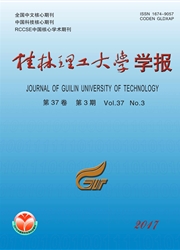

 中文摘要:
中文摘要:
代理移动IPv6中,由于移动节点在移动接入网关(MAG)间切换时,新的MAG都必须与本地移动锚点(LMA)进行注册,导致较高的切换开销。为减少这种开销,引入了代理管理锚点(PMAP),每个PMAP管理由多个MAG子网所构成的域,这样当移动节点在PMAP域内的MAG子网间切换时,MAG只需要与距离较近的PMAP进行切换信令的交互;只有在PMAP域间切换时,才需要MAG与PMAP,以及PMAP与LMA之间的切换信令的交互,避免了一次会话过程中移动节点在MAG子网之间切换时MAG与LMA的频繁切换信令交互的开销。模型和数值分析的结果表明:与PMIPv6方案比较,PMAP-PMIPv6方案的平均切换开销小,域内的切换时延低,一次会话的平均丢包数也少,在一定程度上优化了网络性能。
 英文摘要:
英文摘要:
In proxy mobile IPv6,when the mobile node takes handoff between Mobile Access Gateways (MAG),the new MAG must be registered to the local mobile anchor,which resulting in higher handoff costs. To reduce this cost,the Proxy Management Anchor Point (PMAP)is introduced.Each PMAP manages one do-main composed of a group of MAG subnets,so that when the handoff happens between MAGs within the same PMAG domain MAG needs to register to the shorter distance PMAP.When the handoff is between the PMAP domains,MAG must be registered to LMA through PMAP.This model avoids the frequent registration from MAG to LMA as the mobile node moves across the MAG subnet.Compared with PMIPv6 scheme,numerical a-nalysis results show that the PMAP-PMIPv6 scheme has low handoff cost,low intra-PMAP handoff latency,and low average packet loss for one session.That,in part,improves the network performance.
 同期刊论文项目
同期刊论文项目
 同项目期刊论文
同项目期刊论文
 期刊信息
期刊信息
